If you enjoy watching birds, are an ornithologist, or are just naturally curious, you might have noticed how similar—almost too similar—juncos and chickadees look to one another. Don’t worry; you are not alone. Most people have trouble telling these two birds apart, even experts.
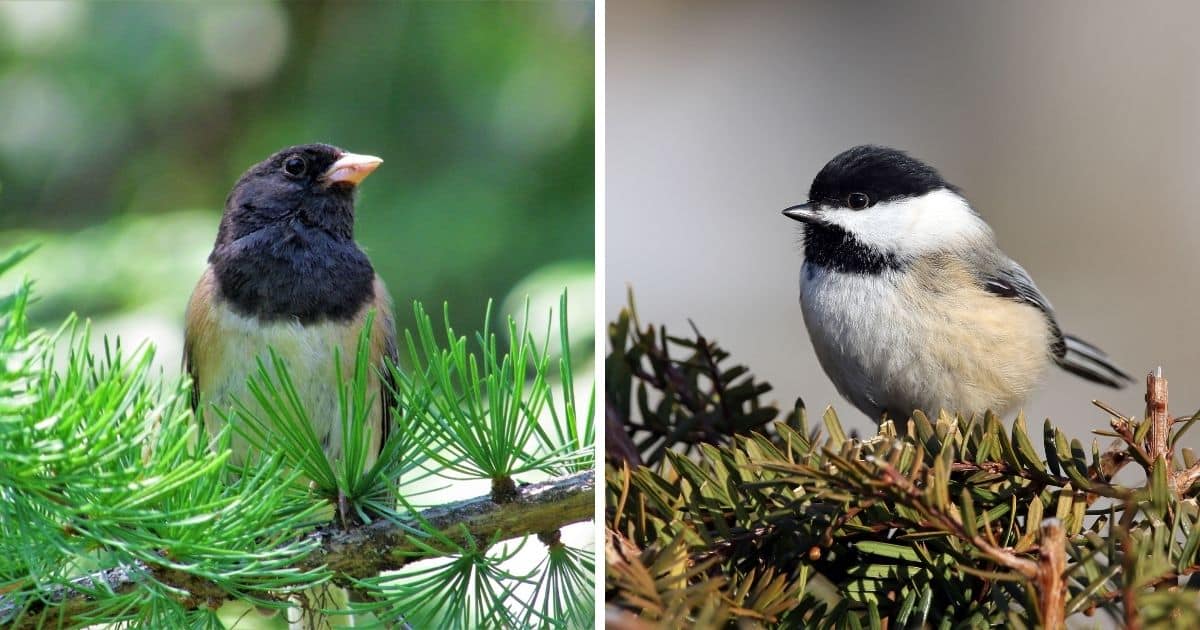
We are all baffled by their uncanny similarities at times, which range from their general size and shape to their matching grey and white shading. Luckily, there are ways to tell these two birds apart. But first, for those unaware, let’s learn what exactly juncos and chickadees are to explain the 11 key differences between the two.
Contents
What Are Juncos?
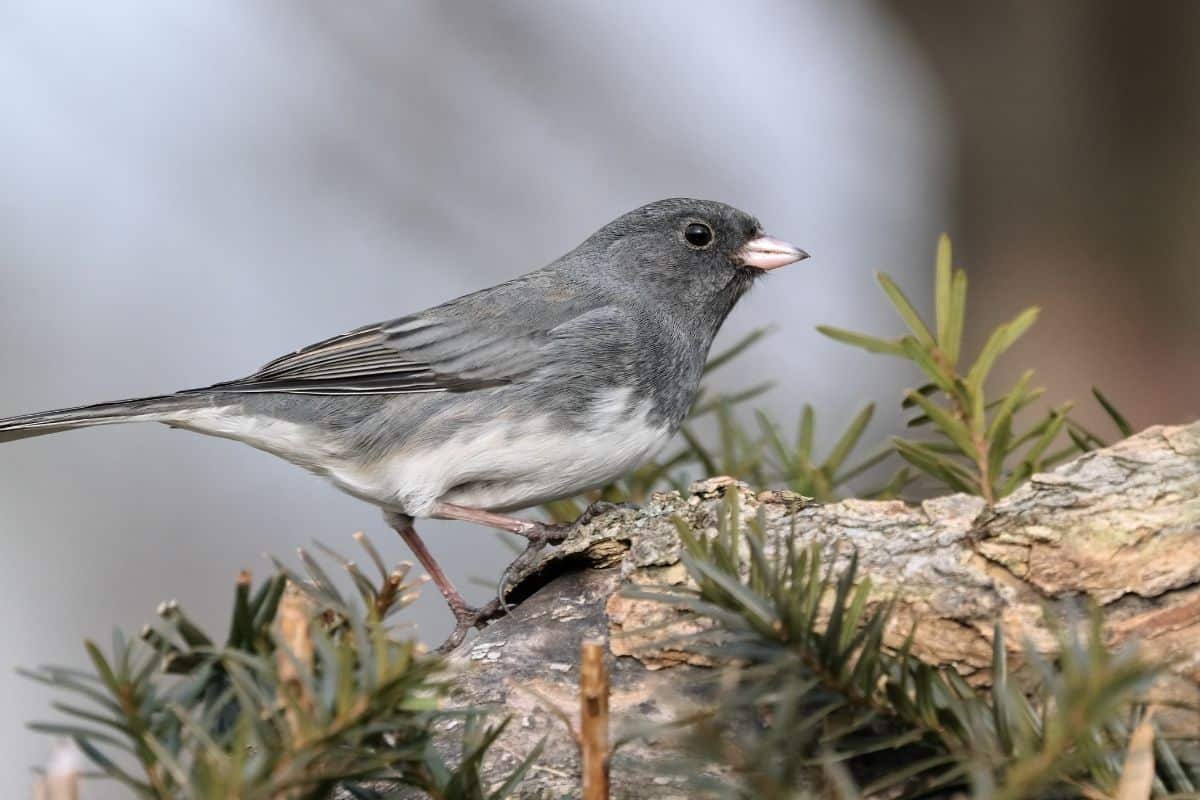
Juncos are a part of the Passerellidae family, which has 13 different subspecies belonging to the Junco genus. A genus is a collection of related species that fall under a family, and the junco genus includes dark-eyed juncos and yellow-eyed juncos. The dark-eyed junco, the most widespread species of junco, is divided into at least six groups, each with separate subspecies.
Juncos are ground feeders, so you will most likely find them on the forest floor rummaging through leaves in search of food. Juncos are also great backyard birds that you can attract during the summer to feed. However, they will start to move toward their winter grounds in the fall.
What Are Chickadees?
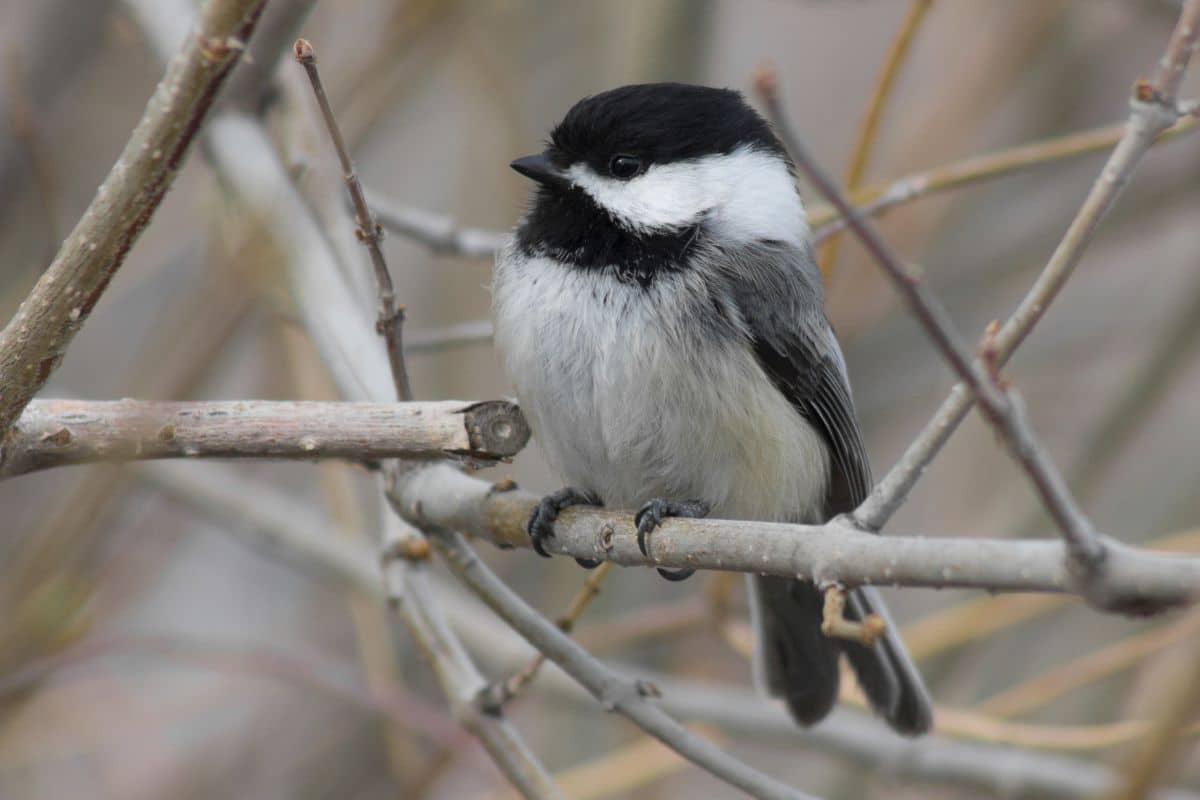
There are seven different subspecies of chickadees, including the most prevalent black-capped and grey-headed varieties, which resemble some juncos most. The chickadee genus (genus Poecile) contains a variety of birds, such as the Carolina and Mountain Chickadees. Additionally, some chickadees, like the Gray-headed chickadee, can be found in both Europe and America.
Typically, you can find chickadees in wooded areas. Despite frequently visiting feeders, chickadees still get more than 75 to 80 percent of their winter food from natural sources.
The 11 Key Differences
Now, you can tell by side-by-side comparison that juncos and chickadees do not exactly resemble one another. There are some similarities, but there are also some differences, which we have listed so you won’t struggle to distinguish between the two when one is spotted. Here are the 11 key differences between a junco and a chickadee.
Coloring
As you know, juncos and chickadees can be challenging to tell apart. However, examining the colors of each bird is the simplest way to distinguish one from another. For instance, the dark-eyed junco has distinctive characteristics, like its black and dark gray coloring.
Additionally, because of the color of their heads, juncos’ eyes appear to be hidden by their dark feathers. Chickadees, on the other hand, have a small black spot on their chest and a black cap on their head. The bluish-gray feathers on their bodies help to highlight their black features.
Habitat
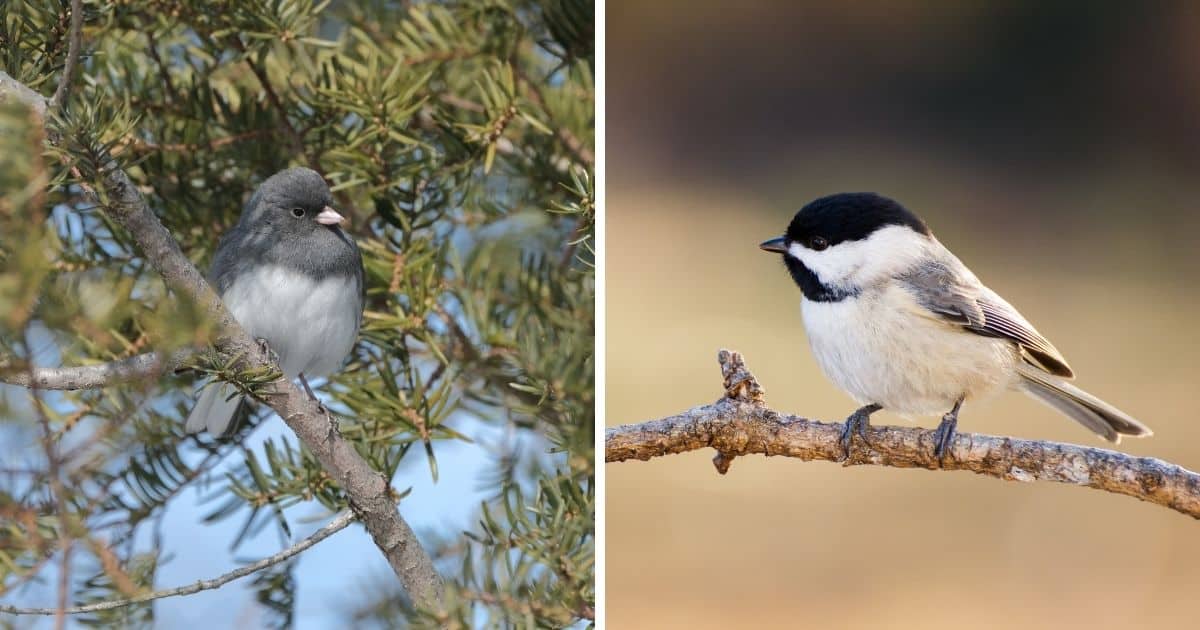
The habitats of both birds serve to distinguish chickadees and juncos. Both birds reside in North America, but juncos are more common than chickadees. Chickadees prefer to live in forests and near the Great Lakes. Juncos are usually found throughout the US.
Call
Chickadees get their name from their call, which is also an alarm call. The sound is “chick-a-dee-dee-dee.” But juncos frequently tick for a few seconds at a time, using a variety of notes and high pitches. Their calls last for two seconds and feature a trill of up to 20 easily recognizable notes.
Diet
As previously mentioned, juncos are typically seen foraging for insects on the forest floor. They consume bugs and spiders during the summer, but weeds, grass, and seeds from feeders during the winter. Although it is not known if juncos store food, this is what they typically eat when they scavenge.
Chickadees are birds that feed on grain, so they prefer nuts and fruits, but they also eat insects. They typically eat caterpillars, crickets, and many other insects. This bird, unlike the junco, is known for building large seed caches that enable them to survive the winter.
They usually eat birdfeeder offerings and decaying animals when food is scarce in the winter. Furthermore, these birds have such an incredible memory that they can store thousands of seeds and locate them again later.
Genus
The Junco genus contains five different species and subspecies of juncos. In contrast, a chickadee belongs to the Poecile genus and is known as a tit outside of the United States.
Size
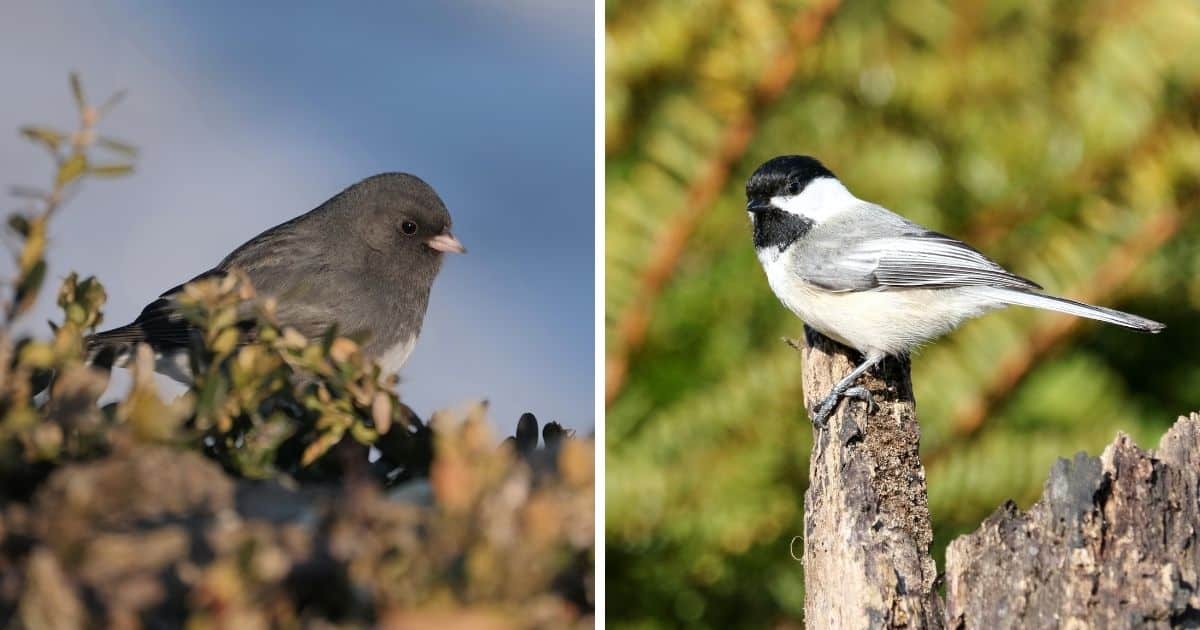
Although not by much, dark-eyed juncos are slightly bigger than black-capped chickadees. A Junco’s length ranges from 5.5 to 6.3 inches, its wingspan ranges from 7.1 to 9.8 inches, and its weight ranges from 18 to 30 grams. But a chickadee has a length of 3.9 to 4.7 inches, a wingspan of 5.9 to 7.9 inches, and a weight of 12 grams.
Migration
Breeding juncos from Canada usually migrate to the south of the US during the wintertime. However, adult chickadees do not migrate; their young birds occasionally travel great distances when chickadee reproduction is high, but these movements are erratic.
Beak
Juncos’ pink beak stands out against the black and dark grey feathers. However, chickadees have the more common black beaks.
Behavior
Juncos eat from the ground, while chickadees eat from bushes. Unlike chickadees, juncos frequently decide to place their nests lower to the ground. Both birds are quite social during the off-breeding season, but black-capped chickadees are especially reclusive and territorial.
Shape
Chickadees are usually lean and have a similar body and head shape to other tits. Juncos are chunkier than chickadees.
Population
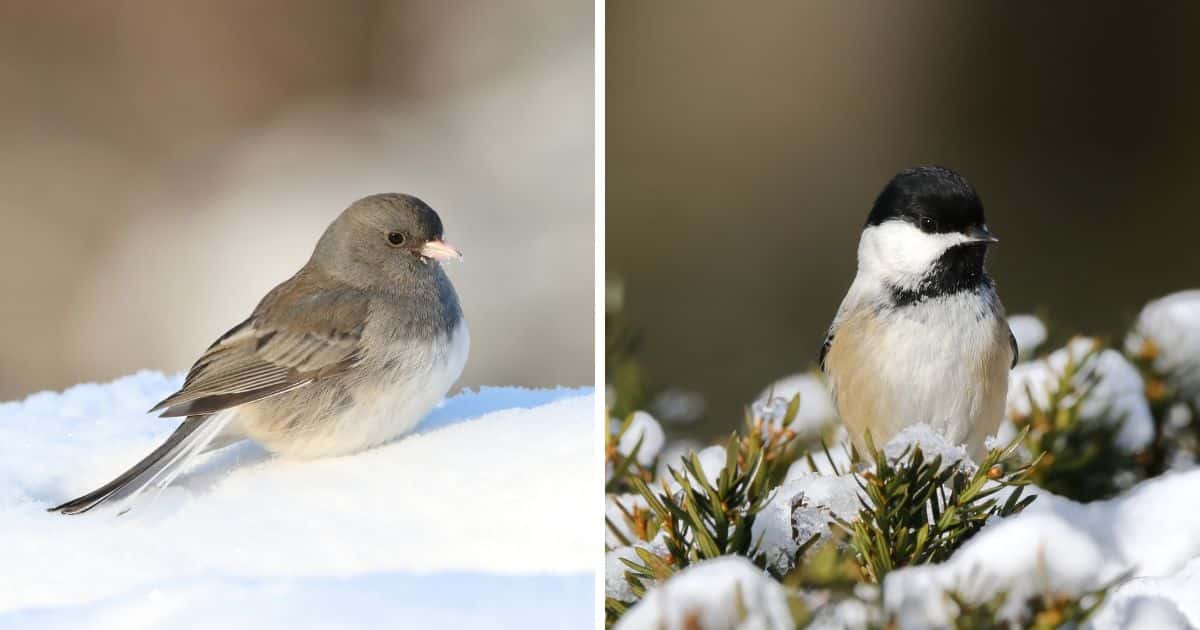
You are most likely to spot a junco bird over a chickadee. This is because dark-eyed juncos are among the most widespread birds in North America. Compared to the 41 million black-capped chickadees, they have a population of about 630 million.
Conclusion
There are many similarities between a chickadee and a junco. However, using the aforementioned 11 key differences, you can now distinguish between the two. You won’t have to wonder any longer as to whether a junco is a junco or a chickadee is a chickadee with this information.
